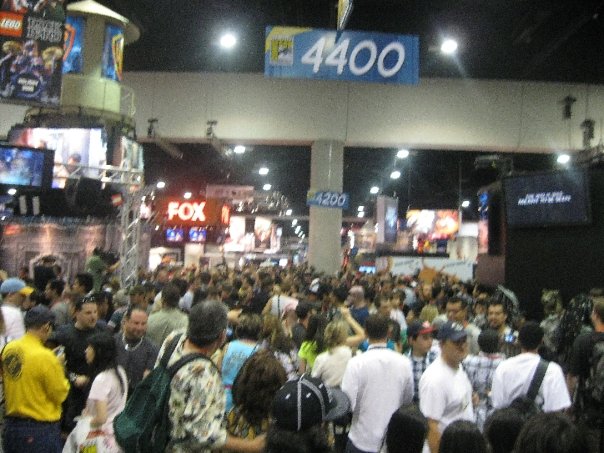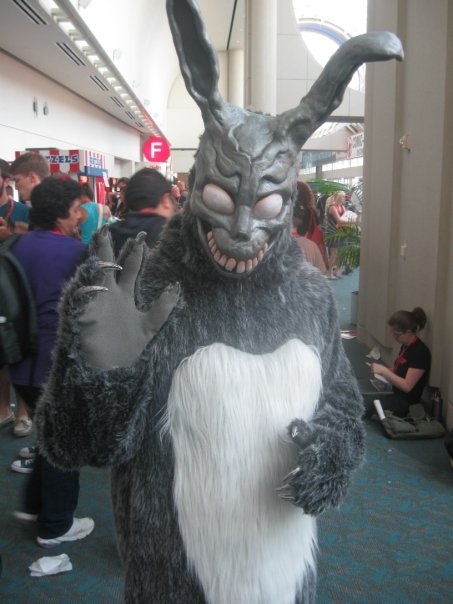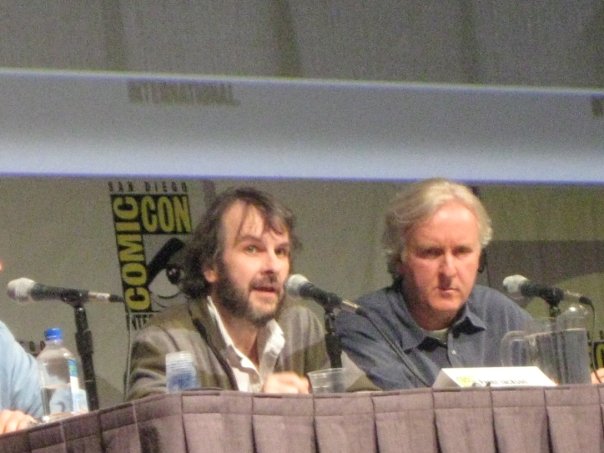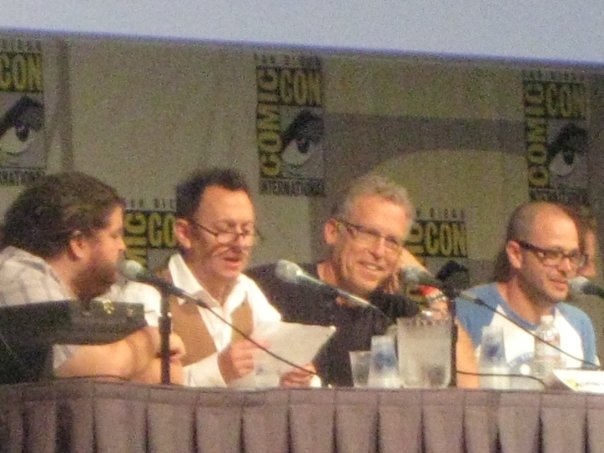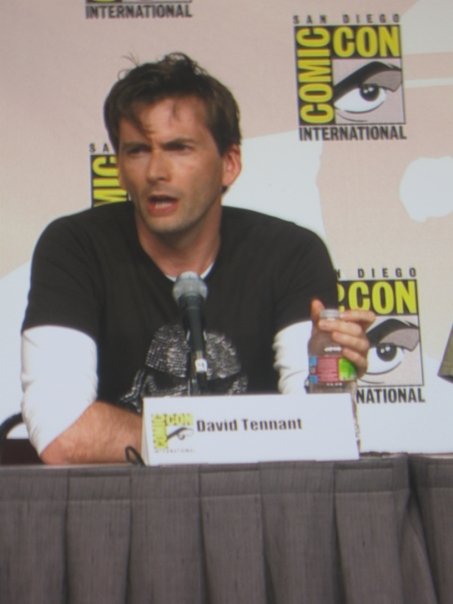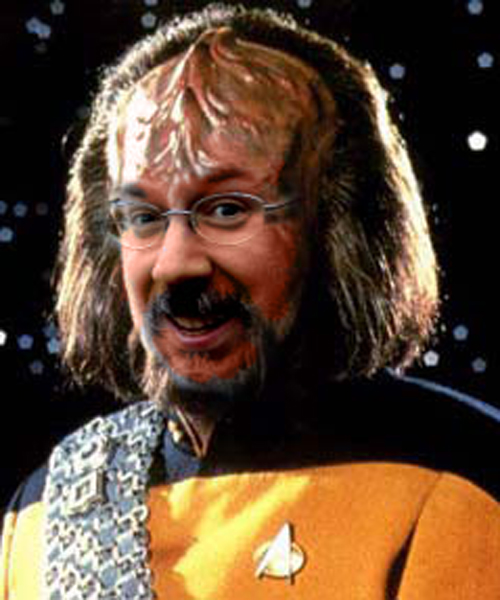Henry Jenkins and Camille Bacon-Smith at Gaylaxicon 1992 (Part One)
/This week, I am continuing to share a second piece from the historic archives of the Aca-Fan world: an exchange between Camille Bacon-Smith and myself at Gaylaxicon 1992. You should know that both Enterprising Women and Textual Poachers were very new books at the time this exchange took place, having appeared just a few months apart, and that the fan world was still trying to process what it meant to be the object of academic study. I would later, in fact, write an essay on the Gaylaxians themselves which appeared in my book (written with John Tulloch), Science Fiction Audiences, and was reprinted in an edited form in Fans, Bloggers and Gamers. I am hoping that these documents may be a source of nostalgia for some and a historical resource for others. In this segment, the two authors introduce themselves, their relations to fandom, and the central arguments of their books, and then instantly get pulled into a discussion of copyright and authorial rights, issues never far from the surface when fandom is concerned.
Transcript of a panel discussion between Henry Jenkins and Camille Bacon-Smith, moderated by Shoshanna, at Gaylaxicon 92, a science fiction convention by and for gay fandom and its friends, on 18 July 1992. At that time Henry was about to publish Textual poachers: Television Fans and Participatory Culture (Routledge, 1992); Camille had published Enterprising Women: Television Fandom and Popular Culture (U. of Penn. Press, 1992). Shoshanna is a fan. All fans identified here are identified with the name/pseud they requested.
Shoshanna: Welcome to the panel on Sociology of media fandom. My name is Shoshanna, and I'm moderating this panel because I'm not actually one of the experts on it. [Camille and Henry laugh.] I'm here to introduce people. On my left is Henry Jenkins, whose book Textual Poachers: Television Fans and Participatory Culture is about to be released [it is, of course, now available]; and on my right is Camille Bacon-Smith, whose book Enterprising Women: Television Fandom and Popular Culture is already out. Camille and Henry have been studying, and have written books on, media fandom, which is a little different from science fiction fandom in that we're talking about fans of television and movie characters, mostly, rather than of science fiction books. But it's a similar kind of community. And they've written very interesting books from somewhat different perspectives. Camille came out of anthropology and ethnology, and she was a science fiction fan but she was not a media fan when she began the study--she went into the community because it looked like an interesting thing to study. Henry, on the other hand, comes from a different academic discipline--he's coming out of popular culture and media studies--and he was a media fan already. That's part of the reason he went into that academic field; he was a fan, and it looked like an interesting tool with which to look at what he was already doing. So we have two people with two interesting books coming at the same community with two different takes, looking at some of the interesting things that people in this community do. For instance, the community is largely female, as you can see if you look around the room--we welcome men [Henry laughs]--but heavily focused on male characters. When female characters are used by the fans who write stories about television characters, it can be problematic; that's one of the things we're going to talk about. And in particular one of the things that fans do--I am a media fan, and I do all the things I'm talking about, I am the community that they're studying [Laughter; Camille sings "We are the world..."]... One of the things that we fans do frequently--not always, and not even most of us, but many of us--is write homoerotic, homosexual stories, where we take two characters, almost always male, like Kirk and Spock, or Starsky and Hutch, and create them as lovers. And we write pornography, or erotica, or whatever word you like, but definitely one of the reasons is because it turns us on, and one of the reasons is because we're really interested in the characters. These range from PG-rated to triple-X-your-mother-would-die. And the question of why does this almost entirely female community write all this almost entirely gay male erotica is a really interesting question that I hope we can get into. I'm just laying out some introductory comments on these people; I'm going to now ask each of them to talk about takes they want to take and things they want to talk about on this panel. Camille, why don't you start, since your book is already out, and some of these people may have read it?
Camille: Okay. What did you want me to say about it?
Shoshanna: Bring up some interesting questions, or particular things that surprised you about the community that you found, so we can talk about them.
Camille: Okay, well... The reason I studied this community at all was because I'd actually started to study the science fiction community; that's my next book. But while I was studying science fiction fans, I kept bumping into these attitudes, or I'd talk to these guy fans and they'd say, "Well, gee, you should have been here before all these women came in with their Spock ears, and screaming teenybopper things." And then I was, of course, talking to women, and they'd say, "I am in Star Trek fandom." And I'd say, "How did you get into it?" and they'd say things like, "Well, I'd been reading science fiction since I was nine or ten..." and a funny thing about that--when I asked guys how they got interested in science fiction, they'd say, "Well, I started reading it when I was nine or ten." And so it was like, hmm...something's wrong here. You know? These women, who seemed to be in their twenties and thirties and forties and fifties, didn't look like the teenyboppers with Spock ears who went screaming after stars, and passing out, and behaving like I did when I was thirteen and the Beatles were on Ed Sullivan. They have master's degrees, this woman is a chemist, this woman is a botanist, this woman is an English literature professor... So I had this real peculiar dichotomy, difference, between the perception of women in the science fiction community and what those women really turned out to be. So I decided that the more interesting question at that time was, well, if these women are not doing what everybody thinks they're doing, what the hell is it that they're doing? So that's what I went to find out. What I found out was that they were writing. Just thousands and thousands of stories. Billions and billions of stories. And every one of them had sentient life. Well, most of them had sentient life; some of them just had mad rutting sex, and they're the ones I collect the most. [Laughter.] Can you say "hatstand"? That is a very insider word for a story that is very very short and exists only for the purpose of presenting a sex scene.
Shoshanna: It originates from a British fan who looked at these stories once and said of the men in them, "They're all bent as bloody hatstands!"
Camille: Yes. So I started studying this, and then I started studying what people were reading and writing, and then... why were they writing this? I mean, not just for slash but for just about everything I read, I sort of had this question: Why do all the women have to be so young, so smart, so god-awful perky, and in particular, at the end, why do they have to be so dead?
Shoshanna: In the stories that the women are writing?
Camille: Yes, in the stories that the women are writing. And with the slash stories, you know, gee...hmm... Where are the women? Where are the women in these stories? Why are there no women? And of course in the hurt/comfort story, "you only hurt the one you love"...and why? So I had all these "why" questions, and I spent years in school being told that "why" was a question you couldn't answer, that it was an inappropriate question to ask, and that I had to restructure my question into something that was more askable. But unfortunately I never got past six years old. So "why" remained my question, and that's what I'm trying to answer.
Henry: Well, as Shoshanna mentioned, I have been part of the fandom, I guess for fifteen years now. I discovered it when I was in high school. I'd always been attached to television shows like Batman when I was a kid, playacting in the back yard, reading Forrest Ackerman publications and so forth. Between high school and college I started going to cons, and met a number of people that I liked. At that time I was involved with the woman who is now my partner, and she really introduced me to the fanzine scene. And part of getting to know her was getting to know fanzines, and understanding them. Initially I thought, "This is not something I'm interested in." The questions they were asking, trying to patch up holes in episodes, I said, "Well, it's because the production crew screwed up." My initial move as a male fan and male reader was to say, any problems I couldn't account for within the text, I accounted for by appealing to outside forces, like authors and producers. And this [what the female fans were doing] is a very unusual way to read, to actually feel comfortable making up part of the story, to be involved enough with these characters to feel that I have the right to speak about them, and to move beyond my respect for the author. And that growth process really changed the way I thought about television, and the way in which I thought about the media, and really got me excited about media.
So I decided to go to graduate school and study media, so that I could teach and talk about television. And what I encountered there was a variant of "Get a life." That is, the way in which academics talk about the audience, by and large, is not unlike the way mundane journalists talk about fandom: as mindless consumption, as stupid passive acceptance of whatever the text gives out; you just sort of suck it in, "yes, I've been programmed by the television show." And I said, this doesn't make any sense, given what I'm seeing going on out there in fandom; be it panel discussions of episodes, or zine writing, or other forms of fan creativity, it just doesn't match up with the stereotypes. So I decided that it was important to me, as a fan, to write a book that addressed that set of stereotypes, and is addressed doubly to a fan readership, which I think needs to hear about itself and needs to be proud of itself, and to an academic readership, which I think needs to hear what's going on out there, what fandom is about. And I wrote it in communication with the fan community; some of the people I worked with on the book are in this room. It was an ethnographic project in some senses; it was also text-based. I spend a fair amount of time talking about what goes on in letterzine criticism, what goes on in certain forms of fanzine writing. And it's also aware of structures of television, the way in which the fanzine stories relate to the structures of the original episode.
I should explain the title, Textual Poachers. Camille, I think, has a much more reader-friendly title, Enterprising Women; you know more or less what she's getting at, there. "Textual poachers" is a metaphor that runs through the book, and one that has a certain resonance in many academic communities, but I've found that fans don't always know what to do with it. It comes out of the work of a French sociologist, Michel de Certeau, who argues that reading, essentially, is a matter of appropriation. As we read, we take up materials that someone else created for their reasons, and we make them our own. We take them over and reallocate them, to speak to alternative interests. And I think that's certainly, dramatically, what takes place in Star Trek fandom or other fandoms. People don't just literally reproduce the episode; they rewrite it. They restructure its orientation. I have a subsection in my book called "Ten Ways to Write a Television Show." It identifies ten very different ways that fans restructure the television shows they're given, to make them speak to the alternative interests of that particular community. And the term "poaching" refers to that.
And I think what's important about it is that it also recognizes the power relations that are involved, and the political dimension of what it means to be a fan. Which is that there's someone out there who controls the means of production and the networks, who controls what makes it on the airwaves, and controls the content. And we as viewers are in subordinate positions; but we have the power that the traditional poachers, the original peasant rebel groups, had to take up the resources belonging to the landowners and reroute them, and make them our own. You can think about Robin Hood as a classic poacher, who steals from the rich and gives to the poor. And, essentially, what I see taking place in fandom is that process, where we steal the cultural resources that belong to the networks and we remake them, to speak to what we as fans want them to be, be they concerns as women, or racial concerns, sexual politics questions or whatever. That's what I think happens most of the time, when people are engaged in fan writing, in one way or another. And I'd like to talk some about intellectual property at some point in this, but I wanted to move on to other questions.
Camille: Could I address one other thing?
Henry: Sure.
Camille: One of the things that's real interesting about Henry's book is that, historically... I'm an anthropologist, but my specialty is folklore. And I study folk esthetic production, and I've studied it historically as well as contemporary folklore. And one of the interesting things is that the "folk" have done precisely the same thing, historically, as far back as you can imagine.
Henry: Absolutely.
Camille: In the forties, people would appropriate the tunes to pop songs so that they could write their own ballads, and even our national anthem is appropriated from a drinking song. So this concept of appropriating the artifacts of our culture is a long-standing tradition; it has been in practice far longer than copyright or trademark law have been.
Henry: Just to follow up on that...this is absolutely right. One reason we don't see it as political--and fans often don't talk about themselves as political, even though this tactic is one that most marginal groups and political groups have used, and certainly is part of folklore going way way back--is that we don't have a politics of cultural preference that mirrors things like the politics of sexual preference. We don't think of our cultural choices as political, or as part of our political life. But if the personal is political, in that aesthetic judgements have a great deal of political dimension as well, and even if we don't talk about the political content of fan writing, simply the act of choosing a text that means something to you, and using it in a way that violates intellectual property, that violates copyright law, to make it your own, is, to my mind, a profoundly political act.
BT, in audience: [unclear; suggesting that women may understand texts differently than men do.]
Camille: Mm-hmm.
Henry: Absolutely.
Shoshanna: And what we're looking at here is women--the fan community being largely women--understand Kirk and Spock differently from the way straight male culture does, and the way that Gene Roddenberry did, and reappropriate what they see, and recontextualize it for their own use.
Henry: I had said I would say something about intellectual property... There's a slogan that I've heard--I don't even know the source of it--that says, "If creativity is a field, copyright is a fence." And I like that as a statement of what I think fandom is about. That is, we as a culture have crushed the potential for cultural production, by creating fences around intellectual property. And I'm very much opposed-- I think copyright is ultimately the death of culture. That the notion of individual authorship, individual possession, and corporate right to control characters ultimately prevents the kind of growth and cross-pollination of culture that we see in classic folktales, for example. The character of Coyote, and the character of Bre'r Rabbit, and the character of King Arthur have been rewritten countless times without regard to any boundaries separating authors and readers. What fandom does is precisely refuse to recognize those boundaries. It's our perfect right-- They beam into our living room every week, and we have the right to tell stories about them, because they are part of our culture.
Camille: I remember in--I think it was eighty-three, the Baltimore WorldCon--does anybody remember when Baltimore's WorldCon was? [Pause.] You're all too young to have been alive then, I know. There was a really interesting panel among the professional science fiction writers, the commercially published science fiction writers, because it was right about that time that the controversy over Marion Zimmer Bradley's sponsored fanzines came up. Because writers were very much afraid of the precedent that Marion Zimmer Bradley's allowing fans who did not ask her specific permission to write stories in her universe, what implications that would have as a precedent for their ownership of their own characters and universes. Because what they feared was that, if this terrible movement got out of hand, there was the potential for a change in the law, and they would by precedent have the right to control their own characters taken away from them. So this was right at the point where shared universes were coming into being; it was before Merovingian Nights, before Damnation Alley--I think that's Roger Zelazny's shared universe--and this whole concept of, if you share the universe, have you lost the rights to it? And if you share the universe today, and want it back tomorrow, do you have the right to take it back, or have you lost the right altogether? It was a huge controversy at the time, it was a major, major controversy in the Science Fiction Writers of America [a world-wide, not just US, professional organization], and the entire thing pretty much died down, not because it was even tested by law, but simply because people began to realize that there is a certain etiquette and courtesy that goes on. That material that is borrowed tends to remain at the folk level, and in material that moves out of the folk level, there is a very carefully maintained sense of etiquette. So that people ask people if they can use their characters; even fans ask other fans if they can use the characters they created. And this very interesting thing goes on in fan writing, that they will use the commercial characters with impunity, but ask permission for the character that the fan writer created. And I think that this has been a very interesting balancing force in this whole ownership of creativity kind of argument.
Shoshanna: I want to mention in this context the Lucasfilm flap, which happened at about the same time as what Camille is talking about. Fans were writing Star Wars fan stories, and some of these were slash stories, and that means stories that pair two characters and set them up as gay, so we're talking Han and Luke as lovers, or whatever.
BT: Actually, the stories Lucasfilm saw and objected to were all straight stories.
Shoshanna: Oh, I didn't know that. Okay. So Lucasfilm was objecting to explicit straight stories. And what they said was, "You may not do this. This is our property. We will let you use the characters for things that we approve of, but you are not currently following the family values of the Star Wars films, and so we will not let you do this. We will sue." And what happened was, first of all, Lucasfilm's lawyers were bigger than our lawyers, and so people stopped publishing this stuff, but it went underground, and it throve underground, and I've seen a number of stories that begin, "Lucasfilm says we can't do this. Lucasfilm has no right to say we can't do this. I am doing this partly to piss Lucasfilm off." And there were other fans who said Lucasfilm did have the right. So the whole issue of intellectual property became crucial there, and it centered around sexuality, which I find interesting.
Henry: I actually in the book have a quote from the Lucasfilm lawyers, which says, [reading from the book] "Lucasfilm LTD does own all rights to the Star Wars characters, and we're going to insist upon no pornography. This may mean no fanzines if this measure is what is necessary to stop the few from darkening the reputation our company is so proud of. Since all of the Star Wars saga is PG-rated, any story these publishers print should also be PG. Lucasfilm does not produce any X-rated Star Wars episodes, so why should we be placed in a light where people think we do? You don't own these characters and can't publish anything about them without permission." And so that's the language that Lucasfilm was using. And many fans, as Shoshanna was suggesting, turned that back and said, "no. You don't have the right to determine what these characters mean, you don't have the right to determine what our fantasies involving them are going to look like, and we will continue to do so," but to protect themselves, pushed themselves further underground, toward a circuit structure rather than a fanzine structure. Because I've got in my files a number of circuit stories involving Star Wars characters that came out after that.
Camille: But I didn't talk about them in my book, and I don't recall your talking about those particular stories...
Henry: I just acknowledge the existence of them, but I don't discuss them directly, because I didn't want to--
Camille: --didn't want to get sued, didn't want the other person to get sued.
NB, in audience: That's kind of died down, Lucasfilm, because I just recently read a Star Wars story that has been published in a zine.
Shoshanna: Oh, yeah. It's died down. On the other hand, Chelsea Quinn Yarbro has just sicced her lawyers on a fanzine publisher and confiscated all unsold issues because they made unauthorized use of a character of hers. It still goes on. It's still a fight.
NB: Oh, yeah. C. J. Cherryh, I heard her in a panel at Darkover Grand Council, where she said anyone--she has a trademark, not a copyright, it's a trademark, and anyone who writes in her universe without her permission, she's going to sue them. I'm a fanzine editor, and I had to reject a story because it was based in C. J. Cherryh's universe, and I can not afford to be sued, and the story is now on the circuit. I haven't read it, I understand it's wonderful--I've read the author's other stories--and I'm sorry I couldn't use it.
Henry: The interesting thing about trademark is that trademark originated to protect the consumer against false advertising. The whole point of trademark law two hundred years ago, three hundred years ago, when it was set up in this country, was that you want to be able to tell that this is an authentic good by a producer, not a fake one. The legal precedent over the last how-many-umpteen years has rewritten it completely, so that it's now to protect the producers against the consumers taking up, for their own use, those characters. And it's even gotten to the point where academics have difficulty writing about trademarked characters. Camille and I were both involved in a book on Batman, in which no artwork was allowed to be reproduced, because DC had trademark control over everything, and had not authorized the project, with the result that the cover of The Many Faces of the Batman has to suggest "Batman-ness" without having anything on it that is literally Batman. And its potential for stifling, again, intellectual growth, cultural growth, communication of subcultures, is astonishing.
Male audience member: I think it goes beyond media fiction, and goes on into all fiction; and not just fiction, but even in things like software, there's a movement to patent ideas for computer programs, and it's really very disturbing. And I wonder what is behind it [? unclear] in our society, what is the sociological phenomenon that's going on.
Camille: Property. It's territory and property. It's the sort of thing that you can say, "My wife, my husband, my child. My book." We tend to perceive things in terms of property, and what we have, we hold, and we'll fight to protect the fact that it's ours. Even though we want desperately for everybody else to make use of it, we want to control that use as well, because it's ours.
(TO BE CONTINUED)


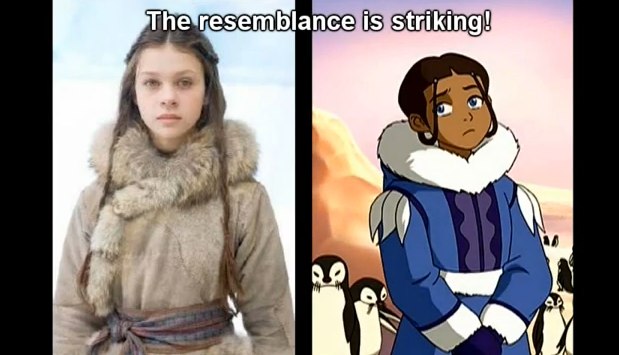
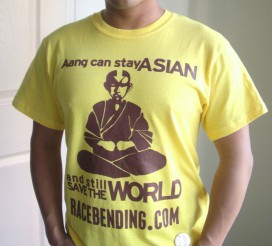
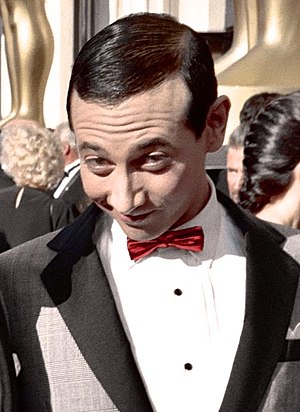
![Reblog this post [with Zemanta]](http://img.zemanta.com/reblog_e.png?x-id=00d28f2c-accc-4de6-8ee0-5b768f5a8890)
![Reblog this post [with Zemanta]](http://img.zemanta.com/reblog_e.png?x-id=91bbb21f-52c0-4293-a57b-4218a799a45b)
